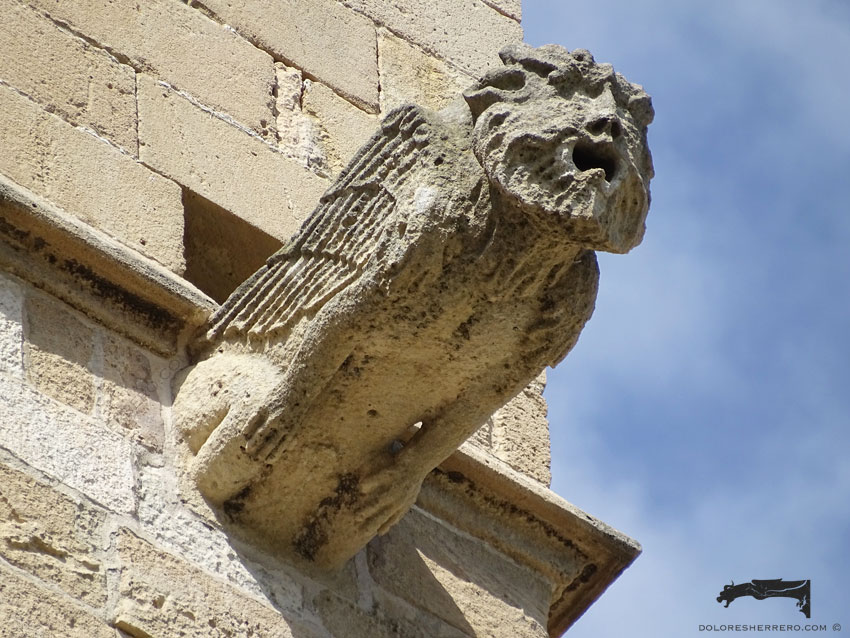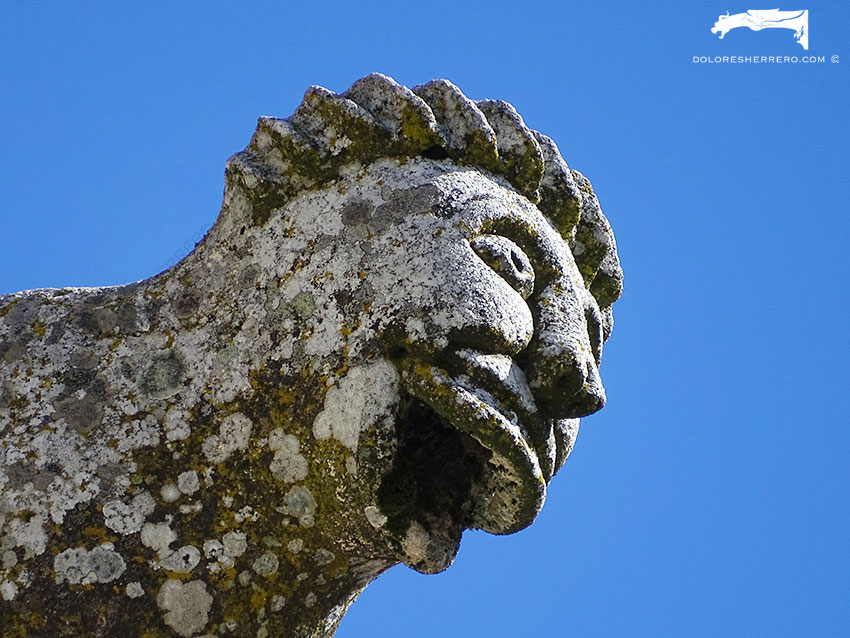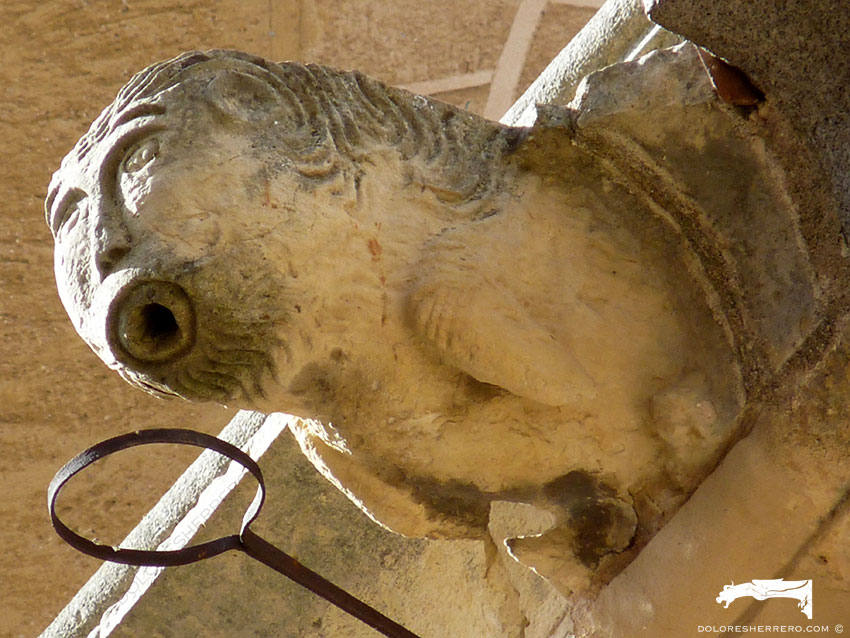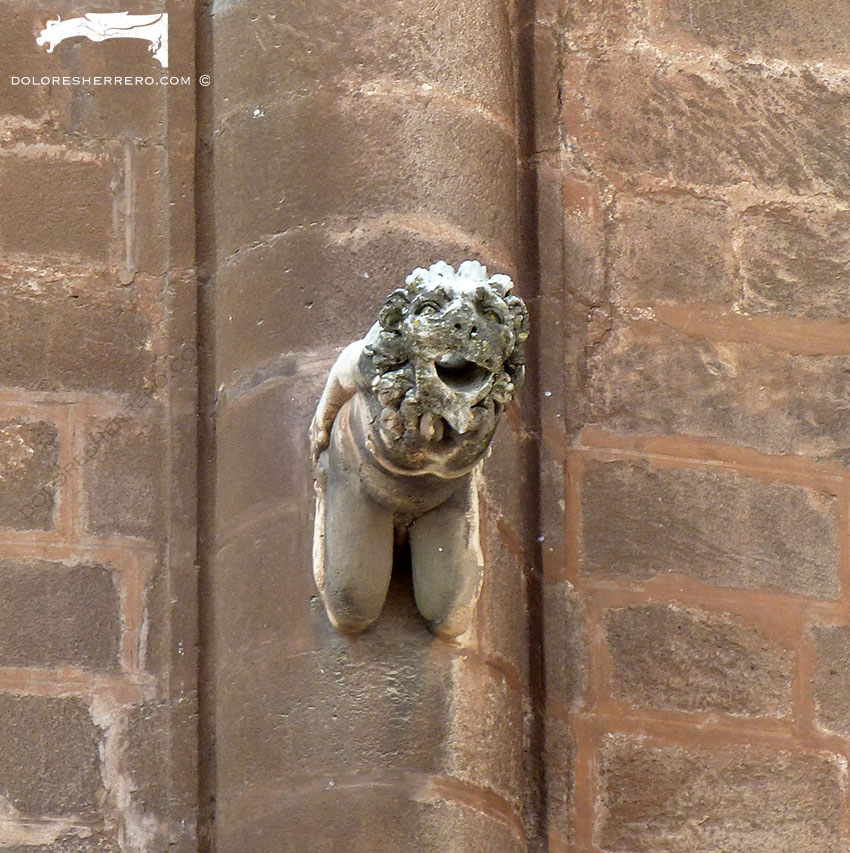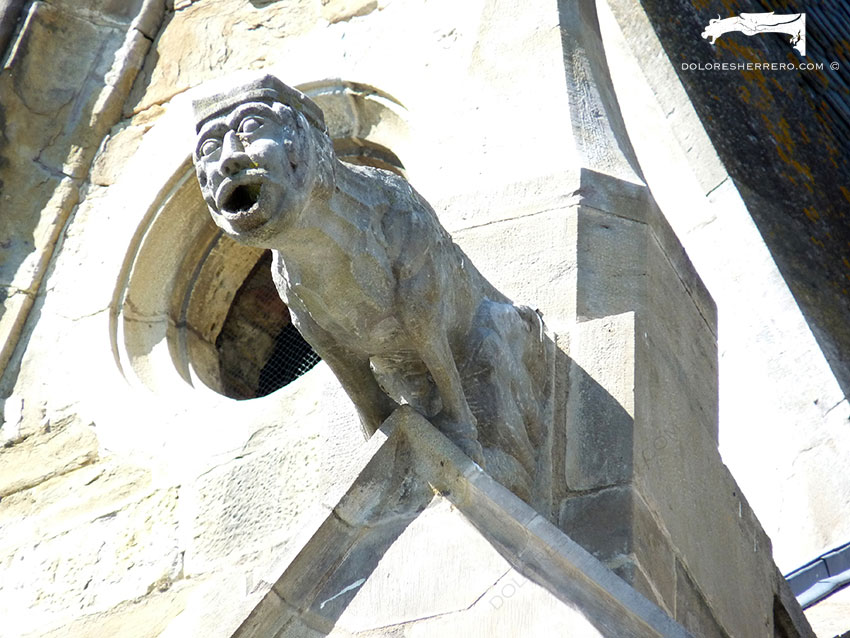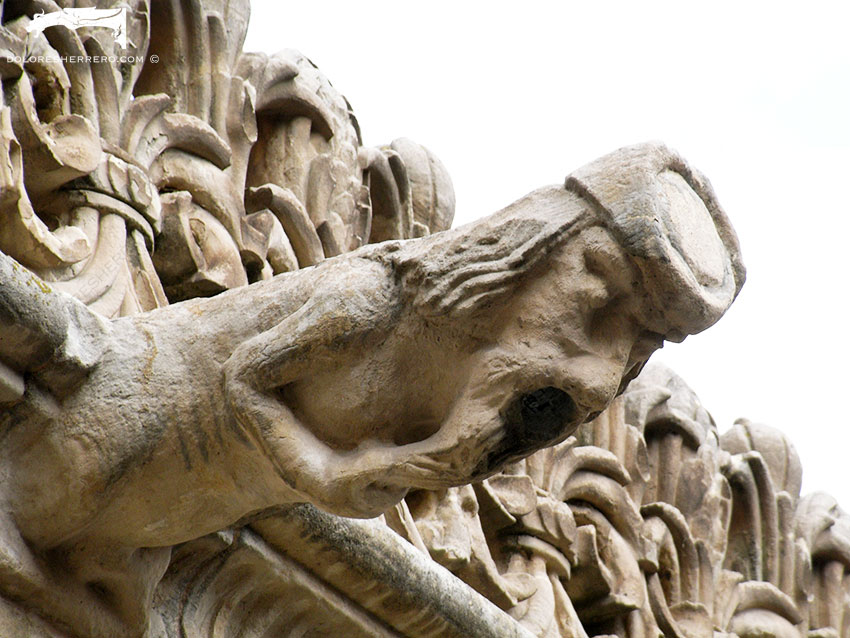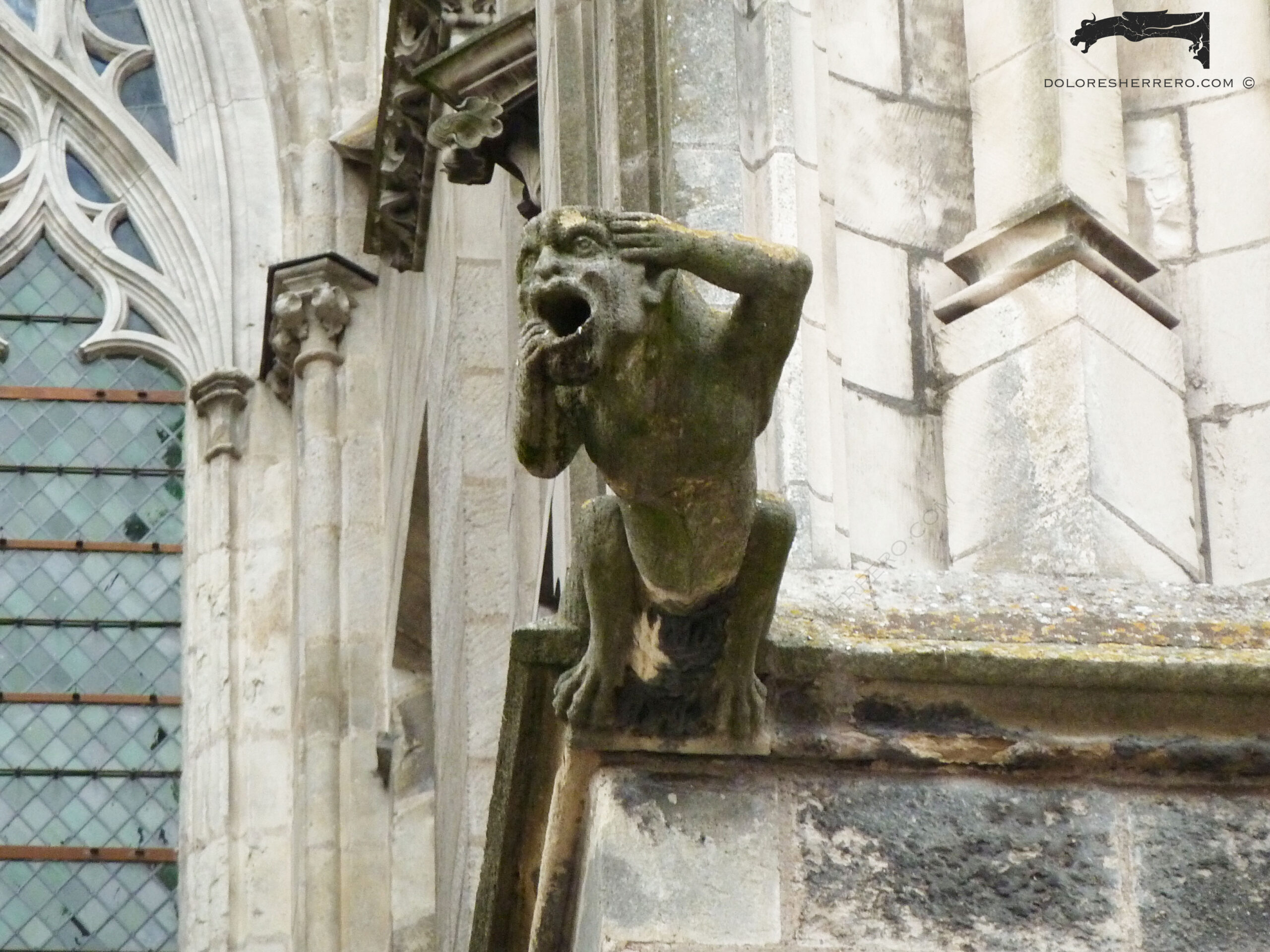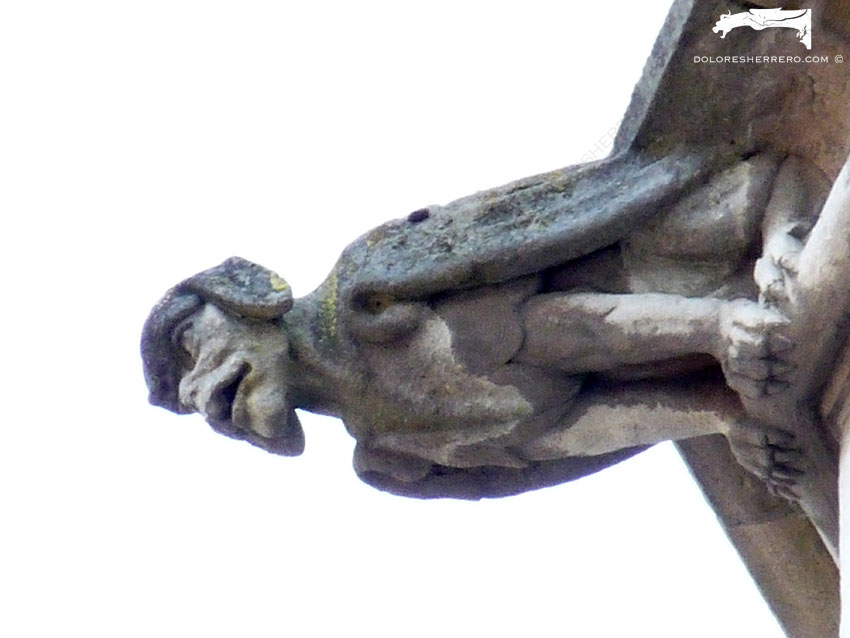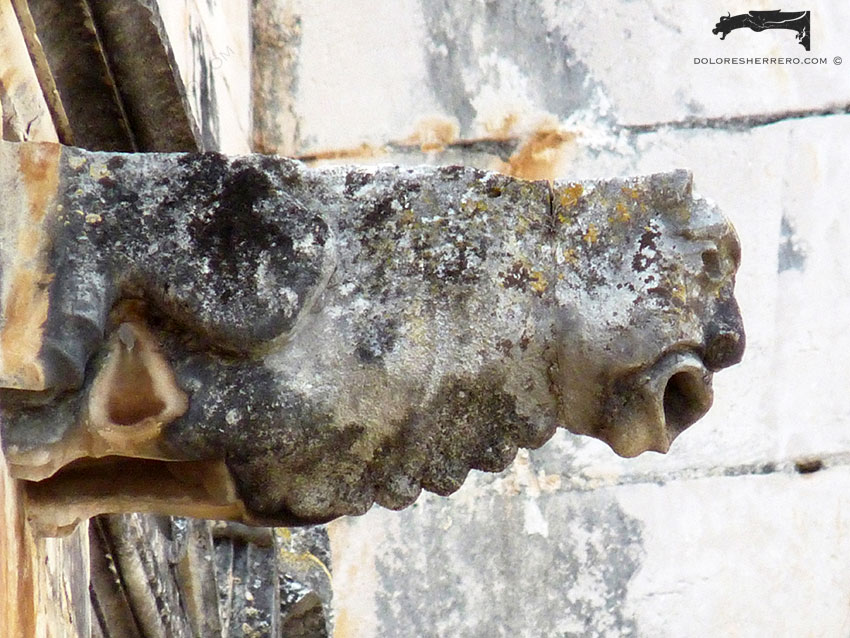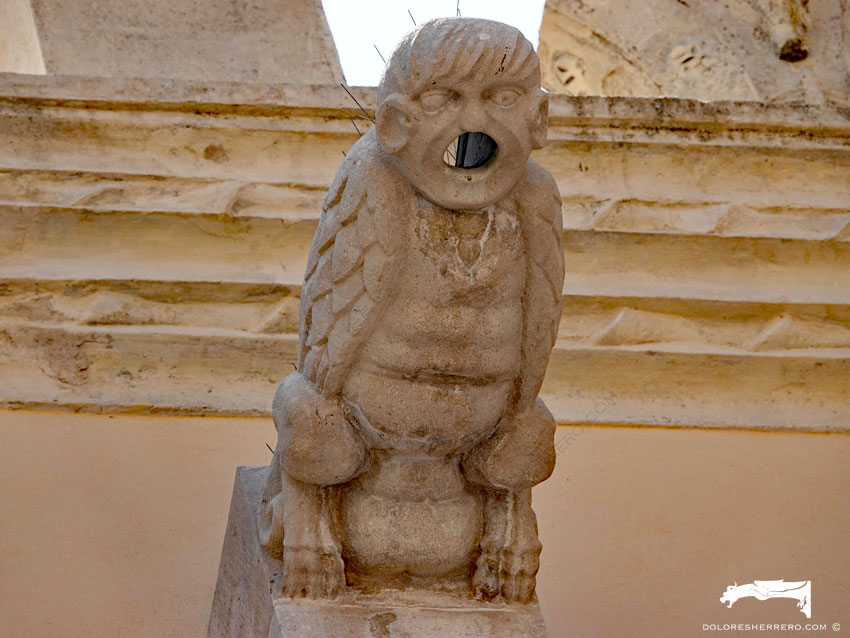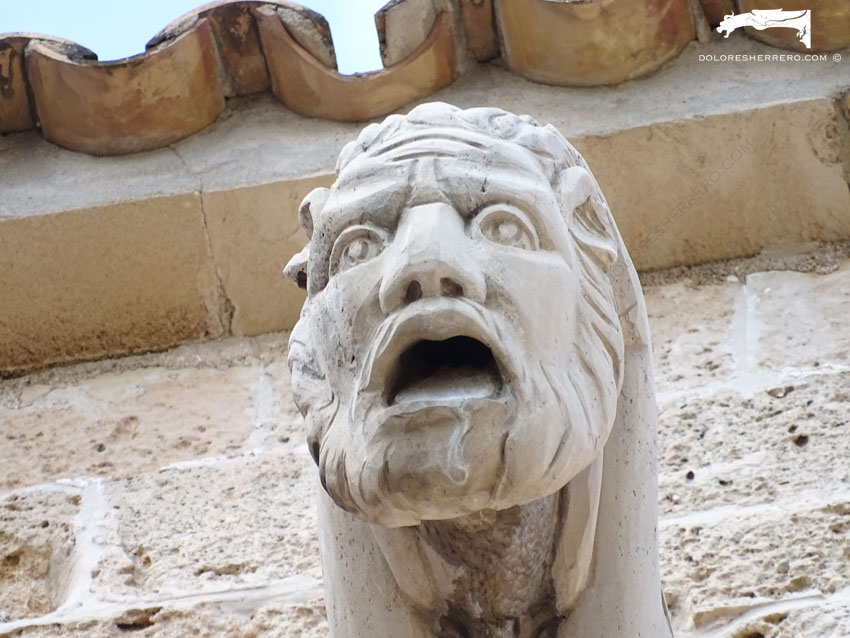One of the most relevant and common typologies in gargoyles is the anthropomorphic.
They are animals with features similar to those of humans. They are half human and may have either human physical features or something that identifies them as men or women, such as clothing. In this first post, we’ll start from the beginning, with their origin and some leading sources.
The most frequently depicted anthropomorph has a man’s head and an animal’s body, or vice versa. The origin of humans with an animal’s head can be found in Egypt, with Anubis, the jackal-god; Amon, with a ram’s head and Horus with a falcon. The iconography of the Mesopotamian and Persian world includes the Achaemenid carvings and tiles from Susa and Persepolis showing the lamassu (a bull with wings and a human head).
In the Greek and Roman world there’s the famous Minotaur. And, of course, in Christian iconography we can’t leave out some of the depictions of the four evangelists, or of other saints like Saint Christopher, who appears with a dog’s head in a 12th century codex and in other later icons.
The monster is linked to the mythology which, since Antiquity, has left a legacy of monstrous creatures that have become established in the various cultures and remained in everyone’s minds. Here we include the anthropomorph, with mythical characters like the siren, the centaur, the minotaur, etc.
The image that the West had of India was influenced by the Greeks. The earliest information comes from the History of Herodotus (5th century BC). In the 4th century BC the image of India as a place of wonders and marvels was shaped by Ctesias the Cnidian, one of the first to discover fabulous animals. In his work he talks about the manticore, the pygmies, the cynocephalus, the gryphon and other monstrous beings. Ctesias saids that he wrote what he saw and what he learned from eye-witness accounts. Later, knowledge and interest in India was expanded with the campaigns led by Alexander the Great in 326 BC.
Julius Obsequens (some date him in the 2nd century and others in the 4th-5th centuries) left us his Liber Prodigiorum, which was later picked up by Lycosthenes, a 16th century scholar. The work provides an extensive catalogue of wondrous events and monstrous births that took place in various places, such as a child with an elephant’s head, etc.
Another written source, fundamental for the study of anthropomorphs, are books about travels, like Homer’s Odyssey and its amazing contribution of fabulous monsters from Greek mythology (cyclops, centaur, siren, etc.), the Argonautica by Apollonius of Rhodes, and Virgil’s Aeneid. Through the journeys of Ulysses, the Argonauts and Aeneas, we can read about the world of monsters linked to myths.
In his Description of Greece, Pausanias, a 2nd century traveller and geographer, wrote about the satyrs, the inhabitants of the Satyrides islands, as red-coloured beings, with a tail as long as that of horses. He described them as rapists of women, with a monstrous sexual appetite; some features of the satyr will be incorporated into devil iconography.
Written sources of hagiographic content include the collection of stories about saints by Jacobus da Varagine, the Golden Legend (13th century). This work is also a source of anthropomorph iconography. One example is the story it tells about the birth of a half-man, half-dog monster that occurred in the 12th century in Spain (vol. II, p.469). It also tells the story of the case of a sow that gave birth to a piglet with a human face in Liege (vol. II, p.469).
In the 15th century, we have texts like the Ymago Mundi (1410) by Pierre de Ailly, and Hartmann Schedel’s World Chronicle (1493). Schedel narrates the birth of a monster with two bodies, with a human face on the front and a dog’s face on the back.
One of the fundamental sources for research on anthropomorphs is the work of Ambroise Paré, a self-taught Renaissance physician who was interested in the mystery of monstrous beings. In the introduction to his book On Monsters and Marvels, which was published in 1575 and prompted the indignation of the Faculty of Medicine, Malaxecheverría says: “…well I think, along with Debidour, that God gave Adam ― and Paré ― all the unreal monsters, because he gave them the power to imagine them”. In his work we can see a stallion with a human head, a child with a frog’s face, another child with the body of a dog, and a man with the hind quarters of a pig. He also mentions ancient sources that talk about sirens and tritons, and a sea monster with a monk’s head.
We have only shown you a small sample of the sources on anthropomorphs, because, as you can imagine, they are endless.
Before finishing, we’d like to point out that classic mythology, where so many anthropomorphs come from, was influenced by the East. One example of this is Hesiod’s Theogony and Works and Days, which, according to Pérez Jiménez, show a similarity with Eastern texts. Some anthropomorphs also appear in Arab manuscripts, such as the Cosmography by Kazwini (the 13th century Arab version of Pliny), in which some bear a surprising resemblance to Western models, like the cynocephalus, which is also similar to Anubis in Egypt.
In all our posts we talk either directly or indirectly about the union between Art and History, but we want to end this post by highlighting the fascinating and impressive bond between East and West. Over centuries we have been linked and our history is packed with an exceptionally rich series of mutual influences across all the arts and other disciplines. A bond and an influence that has always been there and always will be. Our gargoyles and their fantastic iconography with their monsters and anthropomorphs evoke our own mythology, the Gothic, Medieval castles and knights, etc., but they can also transport us to the wonderful world of Arabian Nights.
Anthropomorphic Gargoyles
- Catedral de Palma de Mallorca
- Guarda Cathedral (Portugal)
- Guarda Cathedral (Portugal)
- Batalha Monastery (Portugal)
- León Cathedral (Spain)
- Segovia Cathedral (Spain)
- Sevilla Cathedral (Spain)
- Mirepoix Cathedral (France)
- House of Shells (Salamanca, Spain)
- Tours Cathedral (France)
- Bruges City Hall (Belgium)
- Batalha Monastery (Portugal)
- Church of Nossa Senhora do Pópulo, Coto e São Gregório in Caldas da Rainha (Portugal)
- Catedral de Palma de Mallorca
Palma de Mallorca Cathedral (Spain)
Bibliography consulted
CTÉSIAS, Histoires de l´Orient, traduit et commenté par J. Auberger, preface de C. Malamoud, Paris, Société d´édition Les Belles Lettres, 1991.
DE LA VORÁGINE, S., La leyenda dorada, I y II, Madrid, Alianza Editorial, S. A., 1982.
HESÍODO, Teogonía. Trabajos y días, introducción, traducción y notas de A. Pérez Jiménez, Barcelona, Editorial Bruguera, S. A., 1981.
KAPPLER, C., Monstruos, demonios y maravillas a fines de la Edad Media, Madrid, Ediciones Akal, S. A., 1986.
LINK, L., El Diablo. Una máscara sin rostro, Madrid, Editorial Síntesis, S. A., 2002.
OBSECUENTE, J., Libro de los Prodigios (restituido a su integridad, en beneficio de la Historia, por Conrado Licóstenes), introducción, traducción y notas de A. Moure Casas, Madrid, Ediciones Clásicas, S. A (Colección de Autores Latinos, dtor.: J. J. Caerols Pérez), 1990.
PARÉ, A., Monstruos y prodigios, introducción, traducción y notas de I. Malaxecheverría, Madrid, Ediciones Siruela, S. A., 2000.
RESSOT, J. P., Apología de lo monstruoso. Una lectura de la obra de Ramón J. Sender, Huesca, Instituto de Estudios Altoaragonses (Diputación de Huesca), 2003.
WITTKOWER, R., La alegoría y la migración de los símbolos, Madrid, Ediciones Siruela, S. A. Biblioteca de Ensayo 53 (Serie Mayor, dtor.: I. Gómez de Liaño), 2006.

Doctor of Art History and researcher specializing in the study of gargoyles.
I am Dolores Herrero Ferrio, and my thesis, “An Approach to the Study of Gargoyles of Gothic Cathedrals in Castilla and León”, is dedicated to the study of these fascinating figures.
If you like gargoyles and art history, you will also enjoy my book, “The Gargoyle and Its Iconography,” a book I have written with great care for those interested in the world of gargoyles.
I have created my own Encyclopedia of Gargoyles, a Gargopedia to share with you, where you will discover all the secrets and wonders of these enigmatic sculptures.
I hope you enjoy this Gargopedia as much as I have enjoyed creating it, and remember that each gargoyle has a story to tell, and here you will discover them all.
